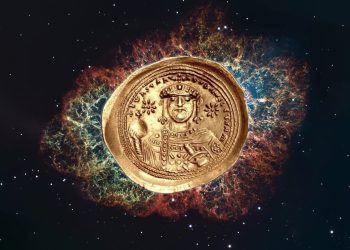Across cultures and centuries, sacred objects have served as powerful symbols of identity, memory, and belief. But some of these relics go far beyond faith — they’ve helped shape the course of human history. In this article, we explore three religious relics that shaped history, each carrying centuries of reverence, mystery, and meaning.
The Shroud of Turin: Science, skepticism, and sacred belief
The Shroud of Turin is one of the most debated religious relics that shaped history. This linen cloth bears the faint image of a crucified man, and for millions of Christians, it represents Jesus of Nazareth at the moment of burial.
The relic is currently kept in the Cathedral of Saint John the Baptist in Turin, Italy, and has been studied intensely since the late 19th century. Scientific analysis — including radiocarbon dating — suggests the cloth may originate from the 13th or 14th century. But many researchers question those results, citing contamination and evidence of earlier origins, including pollen from plants found only in the Middle East.
What makes the Shroud so compelling is its dual life: both a sacred object of deep personal faith and a scientific enigma still unsolved. It’s not just a relic — it’s a window into how people across time wrestle with belief and evidence.
The Prophet’s Beard: A relic of reverence and continuity
Among Islamic sacred relics, few are as intimate as the Sakal-ı Şerif — the Beard of the Prophet Muhammad. Preserved and passed down since the 7th century, it is one of the most important religious relics that shaped history in the Islamic world.
According to tradition, the Prophet’s favored barber trimmed his beard in the presence of his companions. These hairs were preserved with care and eventually became treasured relics, especially under the Ottoman Empire. The most famous display is housed at Istanbul’s Topkapi Palace, where it is viewed by visitors during Ramadan and other sacred times.
For Muslims, these relics are not objects of worship but links to a life once lived — reminders of the Prophet’s humility, leadership, and connection to his followers. They offer a tangible bridge to sacred history, especially in an era when so little physical evidence remains from the earliest days of Islam.
The Shrine of the Three Kings: Pilgrimage, power, and mystery
In Cologne Cathedral, Germany, behind the high altar, sits the Shrine of the Three Kings — a golden reliquary said to contain the bones of the Magi, or the “Three Wise Men” from the Nativity story.
Crafted between 1190 and 1225 by master goldsmith Nicholas of Verdun, the shrine became a major pilgrimage site in medieval Europe. Its ornate design and scale — the largest reliquary in the Western world — reflect both religious devotion and the political power of the Church at the time.
The relics were reportedly transferred from Milan to Cologne in 1164 by Emperor Frederick Barbarossa. Whether or not they truly belong to the Magi is uncertain, but the shrine’s role in shaping Christian ritual, pilgrimage routes, and cathedral architecture is undeniable.
It’s a perfect example of how religious relics that shaped history aren’t just about belief. Instead, they are about how belief reshapes the world around it.
Even after all these centuries, relics like the Shroud of Turin, the Prophet Muhammad’s beard, and the Shrine of the Three Kings still carry weight. Not just as historical artifacts, but as deeply personal links to faith, tradition, and memory. For many, they represent something more than belief — they offer a way to feel closer to the people and stories that shaped entire civilizations.
Different cultures have turned to relics for different reasons — to preserve identity, to inspire devotion, or to legitimize power. And yet, through all the changes in the world, they’ve stayed with us. Passed from hand to hand, guarded through wars, and revered across generations, these objects still raise questions about who we are, where we come from, and what we choose to remember.











